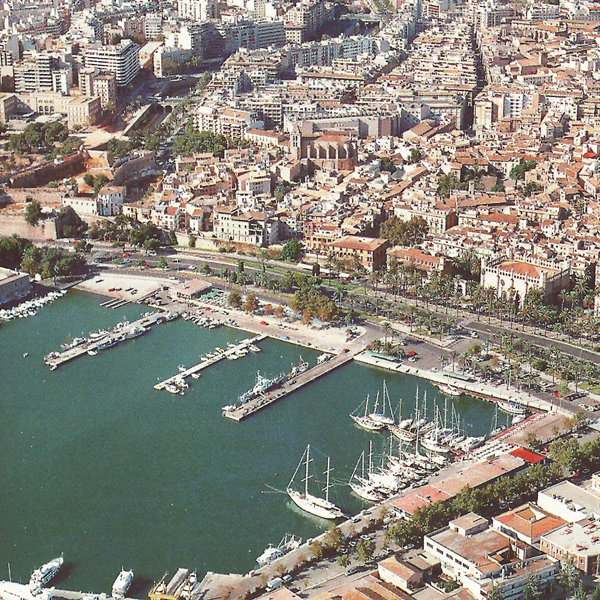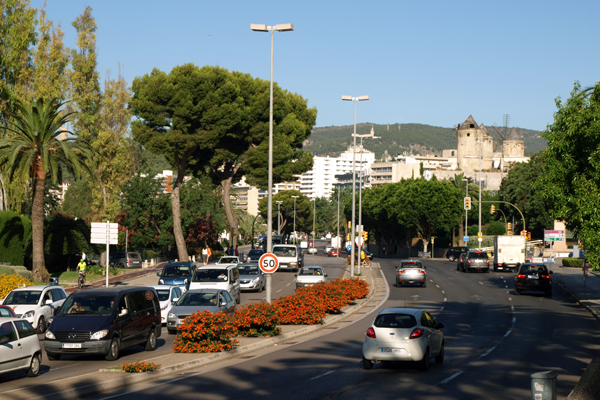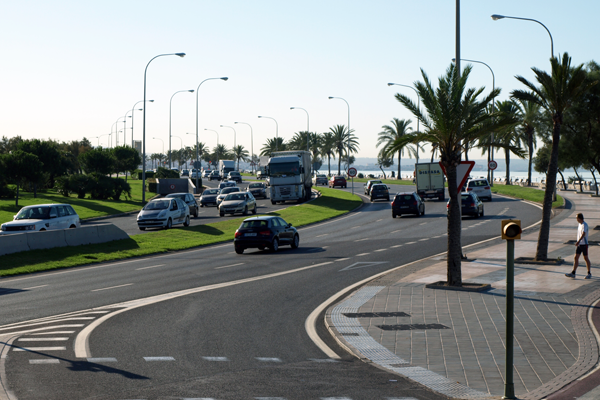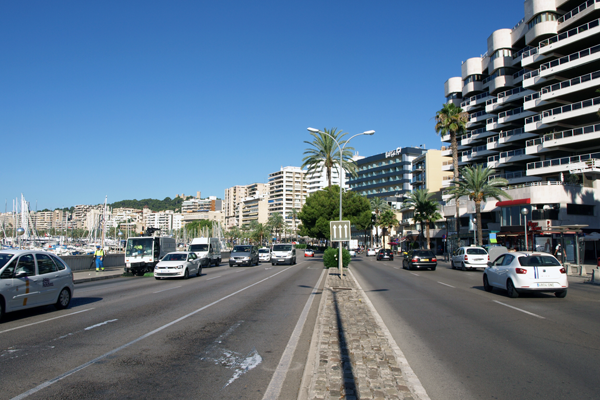Palma
The Synthetic Site Folder and Site Brief are available for free.
Please register and login to access the Complete Site Folder.
- Synthetic site folder EN | ES
- Site on Google Maps
- Back to map
Data

Category Urban - architectural
Location Palma, Mallorca, Balearic Islands, seafront promenade
Population immediate area 60,000 inhab. - City 400,000 inhab.
Strategic site 38.5 ha - Project site 6.4 ha
Site proposed by Directorate‐General of Architecture and Housing. Balearic Islands Regional Government
Owner(s) of the site Palma City Council and Harbour Authority
Commission after competition Preliminary Urban Studies
Team representative architect - urban planner
More Information
How can the site contribute to the adaptable city?
The aim is to adapt Palma City to the changing needs and aspirations for quality lifestyles and tourist services through this operation on the urban frontage defined by the current Seafront Promenade. The city is adapting with a view to reconciling its current structures with trends in uses and practices, which have evolved in the eyes of citizens and tourists alike towards a need for physical exercise‐ cycling, water sports and the use of the seafront terraces. These uses should therefore be prioritized, while at the same time catering proportionally to local needs for mobility and encouraging access to alternative uses.
City strategy
Arriving in Palma along the Airport highway, most of the traffic will be diverted not only along the ring road and the avenues, but also through the Levante social housing estate. This will give the current vehicle routes near Parc de la Mar, Sagrera Boulevard and the Seafront Boulevard a more local character. What has hitherto been a dual carriageway highway can thus be turned into a service street by using the current roadway in front of the buildings, part of which can be occupied by an expansion of today's narrow pedestrian pavement. The nearest roadway to the sea can be converted into a spacious promenade for pedestrians, cyclists and skaters, with space for playgrounds, fitness circuits and broad shady tree‐lined zones.
Site definition
This is Palma's seafront, a 5.5 km long road from Manuel Azaña Street to the ferry terminal. Part of it borders the old town and the city walls, and another part runs beneath densely occupied districts with hotels, apartment blocks, restaurants, nightlife and nautical recreation facilities. The human scale presence and proximity of the sea is greatly diminished by access problems and conflicts with the traffic experienced by residents and visitors. We cannot restore the physical reality prior to the transformations that were brought about the tourist boom in the second half of the 20th century, but we can try to evoke it with a successful adaptation project.
Future of the site in relation to the site family and to Adaptability
The necessary transformations should aim to have a minimal or even zero cost for the public budget. This means resorting to collaboration with the private sector by various means. The potential improvements and increased profitability of hotel and leisure facilities may well compensate the private investment required for the renovation of their immediate environs through the promotion of “costrategies”. The trees on the current median strip in the most heavily built‐up section (Gabriel Roca Avenue) will be kept, but they will no longer cut off by the traffic. At certain points, some hotels and other establishments will be able to install new facilities for guests, passers ‐by and residents. The owners of some of the current pavement terraces alongside the buildings may choose to move to the quieter area with its improved views. In exchange, the beneficiaries of these improvements may help to fund the seafront renovation works.
In addition to the current moorings for private yachts and large excursion boats, floating docks can be installed for small craft boats to bring their passengers to the old harbour and continue their pedestrian route through the historic heart of Palma, or to the various swimming spots which would thus no longer need to be reached by land. It will also become possible to sit down for a drink and almost touch the water, and easier to go out rowing or sailing a dinghy without belonging to one of the heavily fenced clubs. The Palma‐Bike rental facility might even be joined by Palma‐Canoe. The aim for this competition site is to propose ideas for the renewal of the Palma seafront promenade. Participants must take into account the planning previsions, although they may present ideas for the development of these plans and also propose improvements and even alternatives. The open approach of the EUROPAN 13 competition is considered to adapt best to the public participatory process being promoted by the Palma City Council as part of the revision of the urban master plan.




Questions on the site
Is it possible to adjust the number of highway lane's?
¿Es posible replantear el número de carriles de la vía rápida?
Of Course
Por supuesto
Is there a minimum number of lanes to be considered?
Hay un minimo de carriles a respetar?
No minimum number of lanes is recorded but it is understood that access to services and buildings must be resolved.
No consta un mínimo, pero se entiende que se debe resolver el acceso a servicios y edificios.
This site is connected to the following theme
How to transform physical obstacles into new connections?
We understand “bridges” as linear connections between different contexts spanning over a barrier, which may be a river, a railway track or other physical obstacles. But we sometimes can transform the obstacle so that it allows movement in different senses and directions, becoming a connecting element rather than separating barrier. The obstacle may be inhabited, cut or criss-crossed; it can become an opportunity to increase density, change the functions on either side or bring a new perspective to a familiar context.
Specific documents
Questions on the site
You have to be connected –and therefore registered– to be able to ask a question.
Fr. 16 May 2025
Deadline for submitting questions
Fr. 30 May 2025
Deadline for answers
Before submitting a question, make sure it does not already appear in the FAQ.
Please ask questions on sites in the Sites section.
Please ask questions on rules in the Rules section.
If your question does not receive any answer in 10 days, check the FAQ to make sure the answer does not appear under another label or email the secretariat concerned by the question (national secretariat for the sites, European secretariat for the rules).